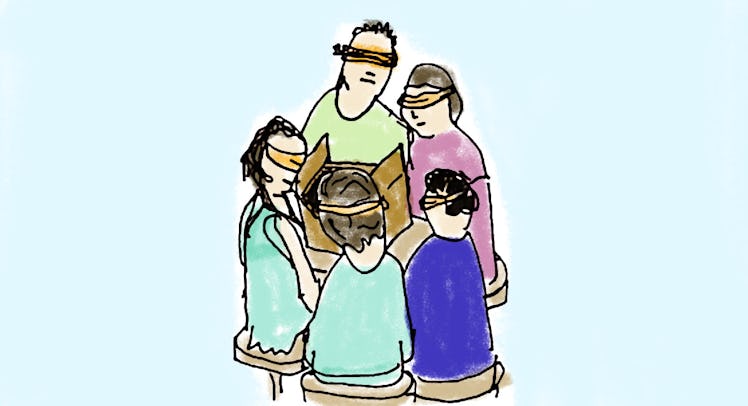‘What’s in the Box?’ Is Simple, Stupid, Time-Wasting Fun
This twist on classic sensory game is a surefire hit with kids.

“What’s In The Box?” is a twist on the classic sensory game in which you ask a child to stick their hand into a container to see if they can determine what you’ve placed inside. The switch here is that the box in this version is magic: kids will never actually know what the actual object is because the magic of the box is that it only allows you to feel — but never actually see — items from other worlds. They must only imagine what they are. That’s what makes it one of the best activities for kids.
Kids get stoked playing this game. The beauty lies in the mystery of the unknown – and getting creative with the items you place in the box. What’s this furry thing? What’s this round, smooth object? This is soft and sticky … is it cold noodles? It’s extraordinarily simple to set up and rarely loses its thrill, which makes it easy to play again and again. Hell, it also works well with a group of drunk adults.
Prep Time: About 15 – 20 minutes the first time you play. Afterwards, you can get going in about 30 seconds.
Entertainment time: 15-30 minutes at a time.Energy Expended: Mental only
What you need
- A box (you can also use a bowl or jar or cup.) Some random objects to place in it. Optional: construction paper and glue.
How to Play
Find an old shoebox and, if you want, decorate it with a bunch of bright construction-paper question and exclamation marks glued to the outside — so it looks like a magician’s tool or an old prop from Bill Nye. I’ve wrapped mine in matte black paper and added a few question marks to the sides, which adds to the excitement and the lore. (“Ooohh, let’s retrieve the mystery box!”). Then, scavenge around for a few everyday items of varying shape and texture — say, a button, some cold noodles, and a handful of marshmallows. These must remain hidden from the players.
Next, gather your players and blindfold them. You could, of course, tell them to close their eyes tightly, but blindfolds add to the fun. Explain to them the history of the magic box, how it was presented to you by a stranger, found deep in an attic, or fell from the sky after a storm. (I’ve crafted a story about a rainy night, a kind, yet, mysterious magician, and a bargain struck.)
Place one of the items you found in the box and have your blindfolded participants, in 20-second increments, take turns reaching in and feeling the objects. They cannot remove the item from the box or scrape it along the sides. They can simply hold it and move it around in their hand. At the end of each child’s turn, ask them if they know what it is. See what they say. Encourage them to use their imagination by making creative suggestions. Could it be Ogre eyes? Fairy dust? It doesn’t really matter. The only thing that does is creativity. The game ends when someone guesses “correctly” – that is, when someone presents you with the most creative answer. Can the answer sometimes be the actual thing? Yes, the magic box sometimes is quite basic. But often it’s extraordinary.
Wrap Up
“What’s in the box?” hits that sweet spot between sensory experience and creativity. The magic box makes regular appearances in my household, and never feels stale as the items and answers change regularly. Just remember: Know your audience. Younger kids will need to be guided more, while older kids will require more of a challenge. Played right, all will be entranced by the magic of the box.
